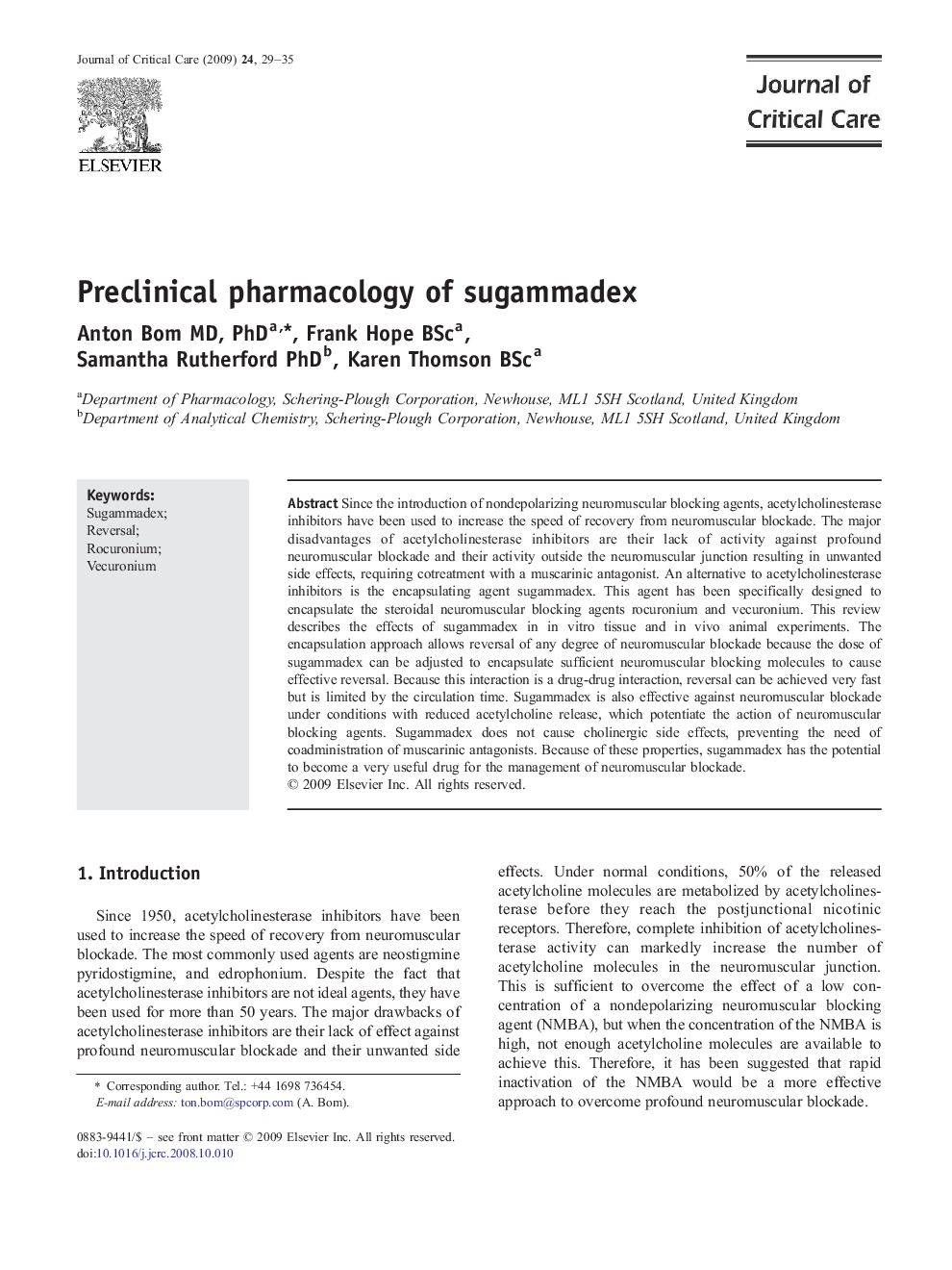| Article ID | Journal | Published Year | Pages | File Type |
|---|---|---|---|---|
| 2765301 | Journal of Critical Care | 2009 | 7 Pages |
Since the introduction of nondepolarizing neuromuscular blocking agents, acetylcholinesterase inhibitors have been used to increase the speed of recovery from neuromuscular blockade. The major disadvantages of acetylcholinesterase inhibitors are their lack of activity against profound neuromuscular blockade and their activity outside the neuromuscular junction resulting in unwanted side effects, requiring cotreatment with a muscarinic antagonist. An alternative to acetylcholinesterase inhibitors is the encapsulating agent sugammadex. This agent has been specifically designed to encapsulate the steroidal neuromuscular blocking agents rocuronium and vecuronium. This review describes the effects of sugammadex in in vitro tissue and in vivo animal experiments. The encapsulation approach allows reversal of any degree of neuromuscular blockade because the dose of sugammadex can be adjusted to encapsulate sufficient neuromuscular blocking molecules to cause effective reversal. Because this interaction is a drug-drug interaction, reversal can be achieved very fast but is limited by the circulation time. Sugammadex is also effective against neuromuscular blockade under conditions with reduced acetylcholine release, which potentiate the action of neuromuscular blocking agents. Sugammadex does not cause cholinergic side effects, preventing the need of coadministration of muscarinic antagonists. Because of these properties, sugammadex has the potential to become a very useful drug for the management of neuromuscular blockade.
